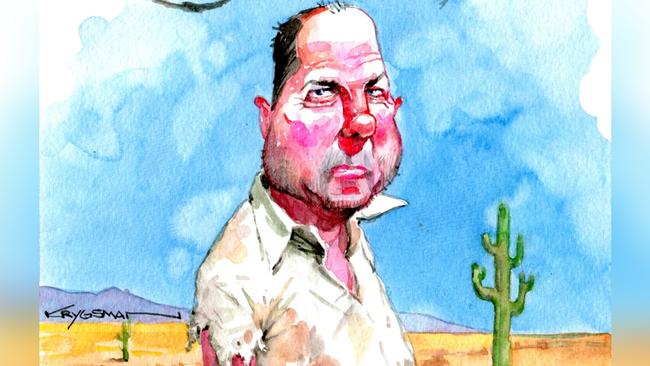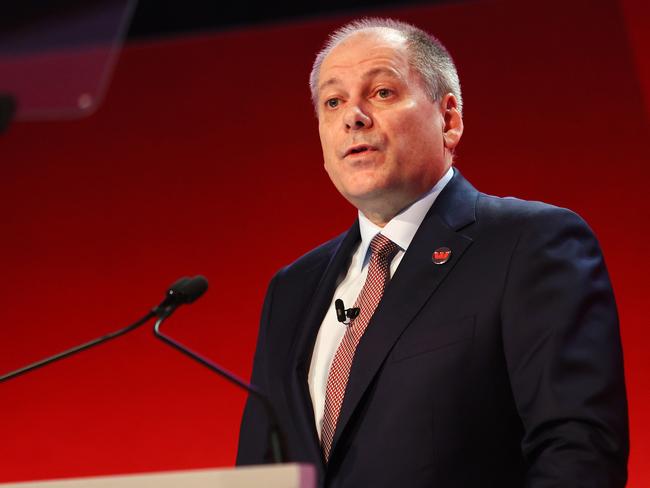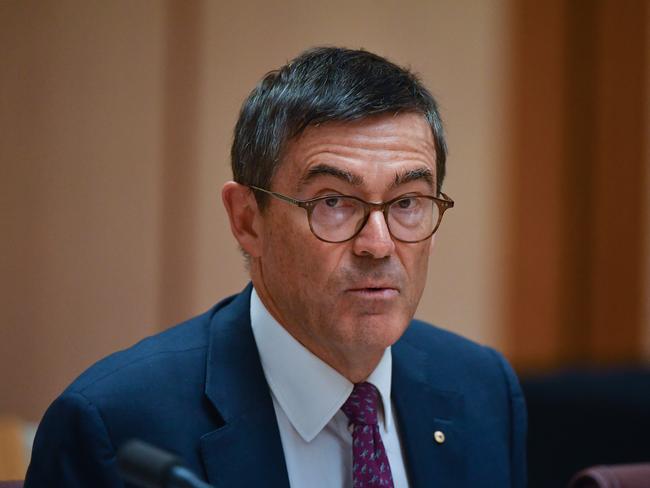
Since the 2009 Global Financial Crisis and 2019 Hayne royal commission, the big banks have taken on a collective status as glorified building societies.
The problem is not just over regulation, it’s also the failure of lemming like bank management to meet demand and take risks.
Barrenjoey’s Jon Mott argues the banks have de-risked themselves too much and while short-term shareholder returns are good because the banks have plenty of cash, long-term revenue falls and profits are competed away in a commoditised market.
“We believe that banks have moved away from their fundamental role in society. Banks are there to take risk via allocating capital to businesses and households and generate an economic return for shareholders,” he said in a recent note.
APRA has regulatory oversight on prudential measures but, as in Singapore, the macro economic impact also needs to be considered. And if only the rich get access to funds, where do the entrepreneurs get their money and the young who want homes to live in?
Private credit is one answer but the question which needs to be asked is why we are still constraining the banks and what impact will that have on longer-term economic growth.
There is plenty of historic evidence to show banks have abused their social licence and maybe can’t be trusted — and private credit is stepping in to fill the gaps, as shown by the growth in business lending and buy now pay later providers.
The regulations, while applied to loans, are really aimed at protecting the $1.5 trillion in bank deposits which they manage for mum and dad investors.
A dud loan is the bank’s problem but it puts at risk the retail money, not the family office funds et al who are investing in the fast-growing private credit market.
Private credit is eating the banks’ lunches, now accounting for 10.7 per cent of business bank loans, just as mortgage brokers are taking control of their home loan customers.
Mortgage brokers have a 72 per cent market share with annual commissions of $4.2bn, on Mott’s figures.

That is why Westpac’s King is appealing for a level playing field with the same rules applied to all loans. It won’t happen but his case is well made and helps explain why his margins are falling, offset a touch by writing back Covid era accounting provisions.
The behemoth, Commonwealth Bank, has 25 per cent of all home loans. And not only is it the only bank which lends more money directly in-house rather than through brokers, it is also cutting back on broker share except through its Bankwest brand.
That is smart thinking by CBA’s Matt Comyn because not only does he make more money by lending directly to customers, he also controls the customer — while for the other banks it is the broker who has the customer, even if ING or Macquarie or ANZ supplied the loan.
Since 2023 the percentage of CBA home loans sold via brokers has fallen from 46 to 35 per cent. And it is now the only big four bank to sell more home loans in-house than outsourced through brokers, who now have 72 per cent of the total home loan market.
Prequin figures show the private credit market exploding globally from $US310bn in 2010 to $US1.8 trillion in 2024 and a forecast $US2.8 trillion in 2028.
Its figures for the APAC region, which includes Australia and Japan, show it growing from $US16.1bn in 2010 to a forecast $US106bn in 2028.
EY figures put the size of the Australian private credit market in 2023 at $188bn, of which $76bn is to real estate.
Prequin private equity numbers for APAC show growth from $US143.8bn in 2010 to $US820.7bn in 2028.
Private funds are starting to impact the public markets and while the trend in Australia is relatively nascent compared to the US this will magnify locally.
As insolvencies build in a slowing economy the banks are no long calling the shots.
A decade or more ago the likes of Ross Griffiths at CBA and Ray Pridmore at NAB sent tremours through corporate Australia, running their credit fiefdoms with an iron hand, putting companies under with seeming glee.
The corporate undertakers like PPG and Ferrier Hodgson made their money through their bank links.
The big accounting firms were forced to sell their insolvency practices because of conflicts between their work as bank auditors and insolvency clients.
But five years ago PwC reacquired PPB and KPMG bought Ferrier because it was the corporate clients and their advisers who were now calling the shots, seeking restructuring advice, and the banks were working with them.
The insolvency game has changed further as private credit works more with their distressed clients and the likes of the $3.5bn Tanarra fund has in-built hedges covering the gamut from venture capital to active equity to private credit to distressed debt.

The $330bn Australian Super fund has circa $165bn invested in Australia and expects its global $7bn private credit allocation to triple in the next five years.
When Bonza airline went into administration it was a relatively unknown accounting firm in Hall Chadwick, not one of the big four, who was called in.
When Qenos went under it was instead leading boutique McGrath Nicol who took the job.
Along with US giant FTI, McGrath competes with the big accounting firms in advising companies who take advantage of the safe harbour provisions to try to work their way clear of debt burdens.
The ASX is also impacted by private equity, which is increasingly using private so-called continuation funds to get around past limits on how long they hold onto an investment — as well as trading directly with other private equity firms to achieve a sale and much needed liquidation event.
There are also boutiques like Armitage providing both advice and long-term funds.
Some private company operators are not racing to public markets, with Australian software giant Canva a case in point.
The $US26bn company raised $US1.5bn earlier this year, which helped early investors and staff cash in on their shares.
Public equity markets are akin to a fashion statement — sometimes in favour and other times not — but in the past such deals would necessarily wait for a public listing.
Canva adviser, Goldman Sachs benefited by picking up the advisory work, investing in the secondary raising and selling fees on the deal, akin to lighting up a Christmas tree.
The ASX likes to measure net new capital, telling investors it has quoted $485bn of new capital in the past seven years — which includes secondary raisings, and in 2022 the $96bn which came from the LSE when the BHP dual listing was collapsed.
New listings this year have totalled just 18, compared with 45 last year and 241 in 2021. Meanwhile foreign listings have totalled two this year, down from seven last year and 25 in 2021. Secondary raisings have totalled $12.6bn this year, $41.6bn in 2023 and $88.3bn in 2021.
Whether the IPO market bounces back as hoped remain to be seen, but all those companies who can raise money from the plethora of family office funds and the like — rather than endure the public scrutiny of a listed market — now have a clear choice.




Westpac’s Peter King this week joined bank doyen ANZ’s Shayne Elliott in complaining about the tight regulations around his own loan practices, which has opened the door for relatively unregulated private credit to take market share.